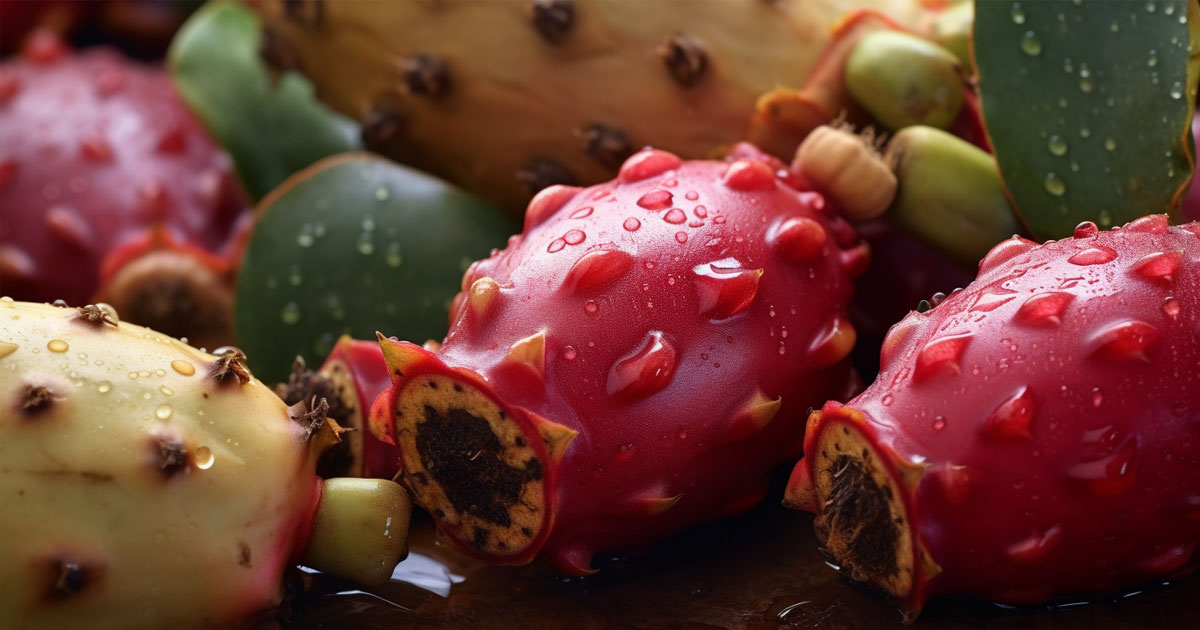
Cactus plants have evolved over millions of years in order to be able to survive in arid, desert-like climates. And humans who settled in these areas have relied on cacti for both medicinal and agricultural purposes. One of the most important species of cactus to many people groups has been Opuntia ficus-indica, a type that has been domesticated and cultivated for thousands of years. This cactus species, otherwise known as prickly pear, bears a fruit that not only provides hydration but also a wide variety of health benefits.
There are actually dozens of species of prickly pear, but Opuntia ficus-indica (also known as Indian fig) is the type most commonly used for human consumption. The plant is native to South America and the lower half of North America, though it can grow in arid climates like pomegranate and guava. It is especially common in Mexico and the southern states of Arizona and New Mexico. While it is valued for its usefulness in most places it grows, it is also considered an invasive species in some parts of Australia and North Africa.
The Indian fig prickly pear is sometimes referred to as a nopal cactus because of the large, flat pads known as nopal (technically cladodes) that gives the plant its recognizable look. Rather than sharp spines like other cactus species, the nopal of the prickly pear has a series of small, hair-like thorns called glochids. The nopals are also the site of the flower buds that bear the prickly pear fruit. And though the plant tends to grow in a bush-like way, it can also more closely resemble a tree and reach heights of 18 feet.
The two main parts of the prickly pear that are used for food are the pads and the fruit (also sometimes called tuna). The pads themselves are usually sliced and served cooked or raw in soups, stews, or salads. The cactus fruit can also be served cooked or raw, and it can be used in both savory and sweet dishes. The fruit has a mild, sweet flavor similar to strawberry or watermelon and can be made into jams or jellies with the addition of pectin. The juice is also valuable as well and is easy to store as a concentrate and then become incorporated into numerous commercial food applications.
The high water content of the prickly pear’s fruit has made it an important part of desert survival for many species over the millennia. But beyond keeping you hydrated, the fruit contains a number of valuable vitamins and minerals. One cup of raw prickly pear fruit contains 60 calories, 1 gram of protein, 1 gram of fat, 14 grams of carbohydrates, and various nutrients:
Vitamins (%DV)
Minerals (%DV)
One of the most noteworthy nutritional facts about prickly pear is that it contains compounds that are known to have antioxidant properties. These compounds, in the form of polyphenols like flavonoids and carotenoid pigments, are believed to protect the body from oxidative stress. Oxidative stress is the state in which free radicals are causing damage to tissues. Free radicals are naturally occuring particles that require the presence of antioxidants to absorb them and render them inert.
Another important compound found in the fruit of the prickly pear is a class of pigment called betalains. These pigments give the fruit its rich red color, but they are also believed to have benefits for overall health and wellness. Interestingly, the prickly pear is the only fruit that has all 24 naturally-occurring betalains. Besides having anti-inflammatory properties, betalains are linked to a number of health benefits.
While fresh prickly pear juice is enticing, many people don’t have ready access to it. Fortunately, prickly pear juice retains both its pleasant flavor and nutritional value when in the form of a concentrate. It can be used for beverages, cocktail mixes, hard seltzers, and nutraceutical applications. Below are some of the health benefits that are associated with the nutrients found in prickly pear:
Prickly pear juice isn’t necessarily thought of as a classic American flavor, but it has grown in popularity in recent years. At FruitSmart, we offer only the highest quality juices, concentrates, and essences so you can deliver innovative and delicious products to your customers. We don’t just provide products, though; we love to work with you to develop new ideas with the latest trends in mind. If you’d like to learn more about any of our products or what it’s like to work with FruitSmart, please contact us today.
